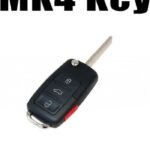The Ross-Tech HEX+CAN VCDS cable, purchased before 2019, has been classified as “legacy” hardware, prompting concerns about long-term support and functionality for vehicles manufactured after 2018. This raises important questions for users who invested in the tool with the expectation of extended usability. Why is the pre-2019 HEX+CAN no longer supported for newer vehicles, and what assurances are there that investing in the newer VCDS system will provide a lasting solution?
One of the primary concerns stems from the perceived short lifespan of the original HEX+CAN. Purchased in 2014 for $350 with the belief it would last for many years, the announcement of its legacy status after only five years raises questions about the longevity of the newer hardware. Ross-Tech offers an upgrade path, including a trade-in option towards a new VCDS system for $399. However, this raises the question of whether the new system will suffer the same fate in a few years, requiring yet another costly upgrade.
A key concern is the long-term usability of the tool. Users want assurance that the new HEX interface will be supported for at least 10 years. There are also concerns about the reliance on Ross-Tech’s servers for functionality. Should Ross-Tech cease operations or their servers become unavailable, users worry about losing access to the software and rendering the hardware unusable, especially for older vehicles. The pre-2019 HEX+CAN operates offline with older VCDS software versions, ensuring functionality regardless of manufacturer support. This offline functionality is a significant advantage and a feature users want to see maintained in future versions.
The core question revolves around investment protection. While the initial $350 investment in the older HEX+CAN seemed justified at the time, the current situation raises doubts. Users want confidence that their investment in a new VCDS system will be worthwhile and provide long-term value. Clarification on the reasons behind the incompatibility of the pre-2019 HEX+CAN with post-2018 vehicles is also needed. What technological changes or industry standards necessitated this shift, rendering perfectly functional hardware obsolete?
Ultimately, users seek a reliable and durable diagnostic tool that offers long-term value. Concerns regarding planned obsolescence, server dependency, and the long-term support commitment from Ross-Tech need to be addressed to restore confidence in the VCDS system as a worthwhile investment for both professional mechanics and individual car enthusiasts. Addressing these concerns will help ensure that the VCDS system remains a trusted and valuable tool for years to come.
The lack of clarity surrounding the future of VCDS hardware and software creates uncertainty for users considering upgrading or investing in the system. A clear commitment to long-term support and offline functionality would alleviate many of these concerns and reinforce the value proposition of the VCDS system. This transparency will be crucial in maintaining the trust and loyalty of the VCDS user community.

